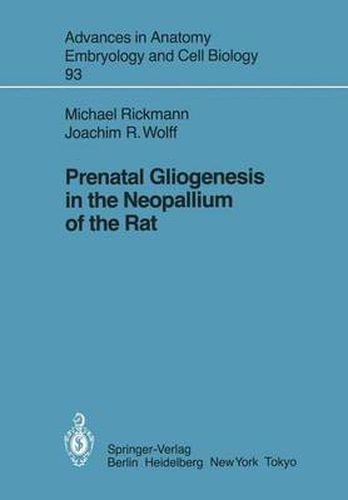Readings Newsletter
Become a Readings Member to make your shopping experience even easier.
Sign in or sign up for free!
You’re not far away from qualifying for FREE standard shipping within Australia
You’ve qualified for FREE standard shipping within Australia
The cart is loading…






This title is printed to order. This book may have been self-published. If so, we cannot guarantee the quality of the content. In the main most books will have gone through the editing process however some may not. We therefore suggest that you be aware of this before ordering this book. If in doubt check either the author or publisher’s details as we are unable to accept any returns unless they are faulty. Please contact us if you have any questions.
At the end of the nineteenth century, controversy arose as to precisely when the first glial cells originate during development of the central nervous system, and to date, the issue has not been satisfactorily resolved. His (1889, 1890) noted that, even in the earliest developmental stages of the germinallayer, there appeared to be two distinct cell types. The cells which he called Spongioblasten were thought to be glial precursors from which all mature glial cells derive; Keimzellen, in contrast, were regarded as forming 1 neurons. His was working on the assumption that the very first preneurons migrate into a preexisting framework of glial eelIs. In contrast to this view, Schaper (1897) regarded both Keimzellen and Spongioblasten as belonging to a common population of proliferating and pluripotent stem cells which begin differentiation into glial and neuronal cells at late developmental stages. It is this latter view which is the basis of the most recent studies on the subject (e. g. , Caley and Maxwell1968a, 1968b; DeVitry et al. 1980). The concept of one common stem cell seemed to be supported both by experiments using 3H-thymidine autoradiography (Fujita 1963, 1965b, 1966; Sauer and Walker 1959; Sidman et al. 1959) and by ultrastructural studies (Fu- jita 1966; Hinds and Ruffet 1971; Wechseler and Meller 1967) indicating that structural differences, which His presumably used to define his two cell types, could be related to different stages of the mitotic cycle.
$9.00 standard shipping within Australia
FREE standard shipping within Australia for orders over $100.00
Express & International shipping calculated at checkout
This title is printed to order. This book may have been self-published. If so, we cannot guarantee the quality of the content. In the main most books will have gone through the editing process however some may not. We therefore suggest that you be aware of this before ordering this book. If in doubt check either the author or publisher’s details as we are unable to accept any returns unless they are faulty. Please contact us if you have any questions.
At the end of the nineteenth century, controversy arose as to precisely when the first glial cells originate during development of the central nervous system, and to date, the issue has not been satisfactorily resolved. His (1889, 1890) noted that, even in the earliest developmental stages of the germinallayer, there appeared to be two distinct cell types. The cells which he called Spongioblasten were thought to be glial precursors from which all mature glial cells derive; Keimzellen, in contrast, were regarded as forming 1 neurons. His was working on the assumption that the very first preneurons migrate into a preexisting framework of glial eelIs. In contrast to this view, Schaper (1897) regarded both Keimzellen and Spongioblasten as belonging to a common population of proliferating and pluripotent stem cells which begin differentiation into glial and neuronal cells at late developmental stages. It is this latter view which is the basis of the most recent studies on the subject (e. g. , Caley and Maxwell1968a, 1968b; DeVitry et al. 1980). The concept of one common stem cell seemed to be supported both by experiments using 3H-thymidine autoradiography (Fujita 1963, 1965b, 1966; Sauer and Walker 1959; Sidman et al. 1959) and by ultrastructural studies (Fu- jita 1966; Hinds and Ruffet 1971; Wechseler and Meller 1967) indicating that structural differences, which His presumably used to define his two cell types, could be related to different stages of the mitotic cycle.